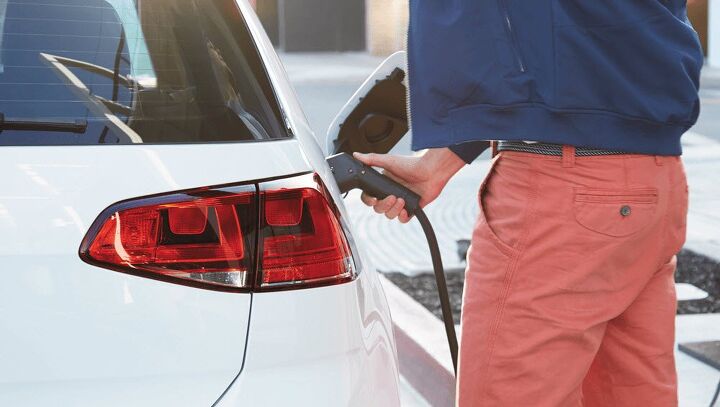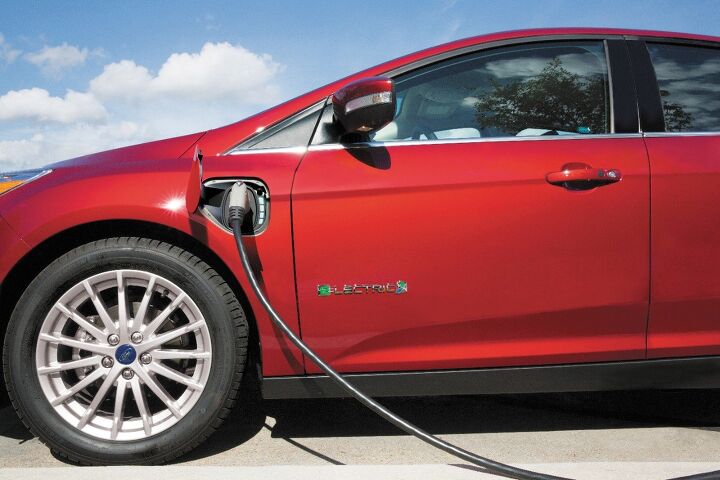#InternalCombustionEngines
Skyactiv-X Engine Debuts Inside 2019 Mazda 3 This Month
Mazda is bringing its new Skyactiv-X engine, hyped as a major leap forward in internal combustion engine technology, to the Los Angeles Auto Show and the end of the month. Wedged inside the new Mazda 3 sedan and hatchback, the powerplant uses “Spark Controlled Compression Ignition,” which is said to combine the efficiency of a diesel unit with the performance of a gasoline mill. The manufacturer claims fuel economy improvements of more than 30 percent over a standard gasoline engine of the same displacement.
Assuming Mazda meets that mark, it’s a petty impressive feat. The 2.0-liter four-cylinder will debut along with the 3’s new platform in L.A. at the end of the month.
Green for Green: California Governor Outlines $2.5 Billion Electric Vehicle Push
If California’s Jerry Brown is known for anything, it’s for continuing his familial legacy of governing the region for a weirdly long period of time and pressing for the proliferation of electric vehicles. While not all of the state’s EV initiatives have gone without a hitch (the LAPD’s unused fleet of battery powered BMWs springs to mind), Brown remains essential in keeping his neck of the woods on the forefront of alternative energy adoption.
Currently, California plans to place five million zero-emission vehicles on the road by 2030. The state previously set a target of 1.5 million ZEVs by 2025. That’s a massive increase, especially considering California only has about 350,000 examples currently plying its roads. Don’t worry, Brown has a plan to stimulate sales: $200 million worth of subsidies per year for the next eight years.
Can an Electric Car Really Save You Money? It Depends on Where You Live
The automotive industry’s gradual shift toward electric vehicles is primarily influenced by global fuel economy mandates. A happy side effect is that consumers benefit from having access to vehicles offering better overall efficiency. This translates into lower running costs and some real savings — once EVs come down in price.
However, there are instances where it might still be cheaper to run a plain Jane internal combustion unit. A new study from the University of Michigan’s Sustainable Worldwide Transportation group explores exactly how cost-effective electric vehicles are and how fuel efficient an internal combustion model would need to be to become the cheaper alternative. The answer, as it turns out, has a lot to do with where you live.
California's Current Strategy to Ban Internal Combustion Engines
California has been toying with the idea of banning internal combustion motors for a couple of years now. While the concept is gaining popularity across the globe, the ban itself is a bit misleading. Regions in favor of the idea aren’t really pursuing an outright ban on engines that burn gasoline; they’re trying to mandate electrification and reduce emissions via non-traditional powertrains.
In April of 2015, California Governor Jerry Brown announced, “If the federal government can’t get it right, we in California are going to take care of business.” With the Trump administration making strides to roll back regulatory efforts, it appears the state of California is ready to pop in some Bachman–Turner Overdrive and begin taking care of said business.
This Is What Mazda EPA MPG Results Will Look Like With Skyactiv-X HCCI Engines (Asterisk, Fine Print, Subject To Change)
Mazda announced on August 8th what had long been rumored. The small Japanese automaker has successfully overcome the remaining issues which held at bay mass production of gasoline compression ignition.
Essentially, Mazda’s Skyactiv-X engines, due first in the next-generation 2019 Mazda 3, is intended to bring diesel-like ignition to small, supercharged four-cylinder engines, along with diesel-like fuel economy. However, the gas-fired Skyactiv-X engines will be wildly cleaner than diesel powerplants. Mazda has said in the past that these HCCI engines will likely limit the need for continuously variable transmissions. We also learned, with Mazda’s latest pronouncement, that the company’s Skyactiv-X engines will be significantly torquier than their Skyactiv-G predecessors.
If Mazda can live up to its pronouncements — the company says the engines are “still under development and figures are subject to change” — it’ll be a win for both the environment and driving enthusiasts. And because Mazda also claims a 20-30-percent improvement in fuel efficiency, it’ll be a win for your bank account, as well.
We wanted to see exactly where Mazda’s alleged fuel savings will put Mazda’s current products on the EPA’s miles per gallon scale, so here are the results of some quick math.
Mazda: "Impending Death of the Internal Combustion Is Overrated"
If you were among America’s 1.4 million new vehicle buyers in July 2017, there’s a 99-percent chance your new vehicle requires fuel. Although the vehicles that run off the electric grid are linked to $7,500 government tax credits, they form barely more than half of one percent of the U.S. new vehicle market.
Mazda, you’ll recall, doesn’t sell any electric vehicles in the United States. Mazda doesn’t sell any vehicles with a plug. Mazda doesn’t even sell any hybrids.
So it’s not surprising that Robert Davis, former Mazda USA senior vice president of operations who’s now in charge of special assignments, candidly laid out the case for the internal combustion engine yesterday at the CAR Management Briefing seminars in Traverse City, Michigan.
“The internal combustion engine has a strong future role in transportation,” Robert Davis says.
U.K. Prepared to Ban Internal Combustion Engines by 2040
Britain will ban the sale of all new gasoline and diesel cars starting in 2040 as part of the government’s plan to reduce air pollution and copy France. The strategy, fronted by U.K. environment secretary Michael Gove and transport secretary Chris Grayling, would not only ban the future sale of internal combustion engines, but also provide a governmental incentive program similar to the United States’ Car Allowance Rebate System — colloquially known as “cash for clunkers.”
Because, as you know, nothing is better for the environment ( or the used car market) than populating scrapyards with fully functional automobiles and having factories across the globe expend extra energy to replace them.
“We can’t carry on with diesel and petrol cars,” Gove told British television audiences on Wednesday. “There is no alternative to embracing new technology.”






















Recent Comments